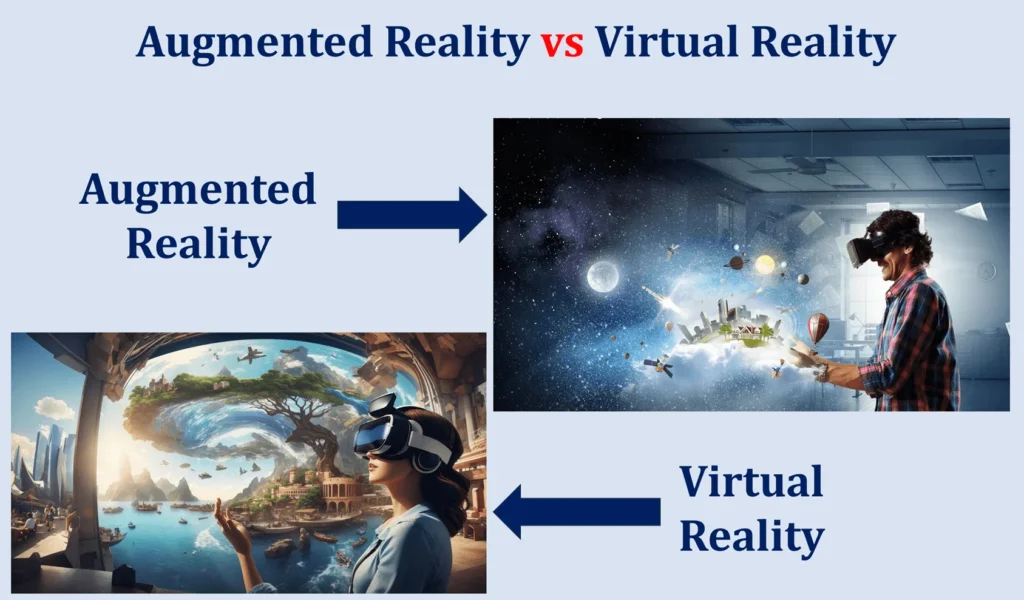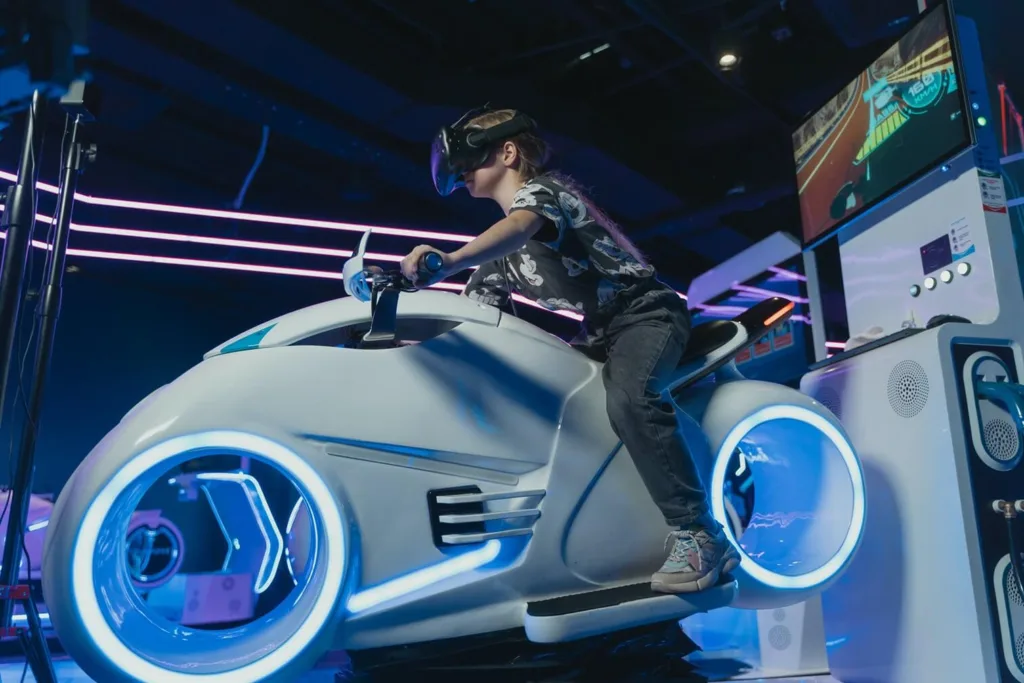
Introduction to Augmented Reality
Augmented Reality (AR) is a cutting-edge technology that enriches our world by adding information and virtual elements to our physical surroundings. Unlike Virtual Reality (VR) which immerses users in an environment AR enhances and complements the existing reality. It offers users a captivating experience bridging the gap, between the realm and the physical world.
Definition and Explanation
AR combines computer generated content with our real-world surroundings presenting it in a way that we can perceive and interact with through devices. It overlays elements like 3D models, text, images or videos onto our environment creating an enhanced view. We can. Engage with these additions, in real time enhancing our understanding and perception of the surrounding environment.
Brief Historical Overview
Although augmented reality (AR) may appear to be a technology its origins can be traced back, to the 1960s. Ivan Sutherlands paper titled “The Ultimate Display” provided the groundwork for AR by introducing the idea of a head mounted display (HMD) of overlaying content, onto the physical world. Over the decades, advancements in computer vision, graphics, and mobile technology propelled the development of AR applications.
Current Applications and Impact
AR has found its way into various industries and domains. From entertainment to healthcare, education to architecture, AR has transformed the way we interact with the world. In entertainment, popular games like Pokémon Go introduced AR to the masses, allowing players to catch virtual creatures in the real world. In healthcare, AR offers surgeons a tool for enhanced precision during complex procedures. The impact of AR goes beyond recreation and medical fields, as it continues to revolutionize numerous sectors.
How Augmented Reality Technology Works?
To understand how AR works, it’s crucial to delve into its technical components, infrastructure, and different types.
Technical Components and Infrastructure
Augmented reality (AR) combines components of hardware and software to create its experiences. When it comes to hardware it typically involves devices such, as smartphones, tablets, smart glasses or head mounted displays (HMDs). These devices employ sensors, cameras and processing units to perceive the world monitor user movements and generate content, in real time. The software side encompasses computer vision algorithms, motion tracking, and sophisticated rendering techniques.
Marker-based vs. Marker less Augmented Reality
In marker-based AR, users rely on visual markers, such as QR codes or distinctive patterns, to trigger and anchor the virtual elements in the physical world. The markers serve as reference points, allowing the AR system to accurately position and align the digital content. On the other hand, marker less AR utilizes computer vision and object tracking algorithms to identify and track objects or surfaces in the real environment. This approach enables a more seamless integration of virtual elements without the need for external markers.
Augmented Reality Devices and Platforms
AR technology is supported on various devices and platforms. Smartphones and tablets are widely used for reality (AR) experiences, due to their availability and impressive processing capabilities. Android and iOS developers may now construct augmented reality (AR) applications with frameworks like ARKit and ARCore, thanks to the introduction of these technologies by companies like Apple and Google. Furthermore, augmented reality (AR) experiences can be obtained through the use of glasses or head mounted displays (HMDs) like the Microsoft HoloLens, Magic Leap, or Oculus Quest.

Distinction Between Virtual and Augmented Reality
The primary differentiation between virtual reality (VR) and augmented reality (AR) is how they alter users’ perceptions of and interactions with their environment.
Augmented Reality
AR combines content with the world overlaying computer generated information onto what users see in their physical environment. This technology enhances the existing surroundings by adding elements like images, videos or 3D models that coexist with the world. AR typically makes use of devices such, as smartphones, tablets, AR glasses or heads up displays to seamlessly blend elements with reality in time.
Virtual Reality
On the hand VR creates an immersive computer-generated environment that isolates users from the physical world. By wearing VR headsets or goggles users are transported to an environment that often spans 360 degrees. In this world they can interact with. Experience an entirely digital realm. VR technology completely replaces the user’s real-world surroundings with a digitally generated environment, offering a sense of presence and immersion in a simulated reality.

While augmented reality enhances the real world by overlaying digital content onto it, virtual reality creates an entirely artificial environment, immersing users in a simulated reality, detached from the physical surroundings.
Key Industries and Fields Transformed by Augmented Reality
AR has made significant inroads into diverse industries, bringing about transformative changes in healthcare, education, and entertainment.
Augmented Reality in Healthcare and Medicine
In the healthcare industry, AR is revolutionizing patient care, surgical procedures, and medical training. Surgeons can utilize AR overlays to visualize critical patient data, such as MRI scans or vital signs, during operations, leading to improved precision and reduced risks. AR can be employed for remote consultations, where medical experts can guide on-site healthcare workers through intricate procedures in real-time. Additionally, AR offers a means for medical students to practice surgeries or learn anatomy through interactive digital models.
Augmented Reality in Education and Training
AR has immense potential in revolutionizing education and training methodologies. It opens up new avenues for interactive and immersive learning experiences. For instance, AR can bring historical events to life by overlaying historical figures, artifacts, or landscapes onto real-world locations. Science classes can leverage AR to visualize complex concepts and conduct virtual experiments. Furthermore, vocational training can benefit from AR by providing realistic simulations and hands-on practice for various industries like manufacturing, engineering, or aviation.
Augmented Reality in Entertainment and Gaming
Augmented reality (AR) has revolutionized the entertainment, sports and gaming sector in ways. Popular games, like Pokémon Go and Harry Potter; Wizards Unite have enthralled millions of players around the globe blurring the boundaries, between reality and the virtual realm. Through AR gamers can venture into their surroundings while engaging with characters, objects and exciting challenges. Additionally, AR is being utilized in the entertainment industry to enhance live performances, concerts, and events, offering audiences a unique and immersive visual experience.

The Future of Augmented Reality
Augmented Reality continues to progress rapidly, with advancements and trends shaping its future.
Advancements and Trends
Advancements in AR technology is focusing on improving immersion, enhancing user experience, and expanding its capabilities. From more accurate spatial mapping to realistic physics simulations, developers are constantly striving to create more lifelike and seamless AR experiences. Augmented Reality is also blending with technologies, like Artificial Intelligence (AI) and Internet of Things (IoT) opening up a new world of opportunities.
Implications for Business and Industry
The implications of AR for business and industry are far-reaching. AR has the potential to revolutionize marketing and advertising by enabling interactive and engaging campaigns that blend the virtual and physical worlds. In manufacturing, AR can enhance productivity and efficiency by overlaying real-time data and instructions on the assembly line. Moreover, AR has the capacity to transform customer service, remote collaboration, and employee training across various sectors.
Ethical Considerations and Challenges
As with any emerging technology, AR also poses ethical considerations and challenges. Privacy concerns arise when AR applications collect and process user data in real-time. Maintaining user privacy and safeguarding data becomes crucial for developers and organizations. Additionally, AR addiction and overreliance might lead to negative consequences, such as decreased real-world interaction, detachment from reality, or physical and mental health issues. Striking a balance and promoting responsible usage is essential.
Benefits and Limitations of Augmented Reality
Understanding the benefits and limitations of AR helps set realistic expectations and guide its future development.
Advantages and Positive Impacts
AR offers numerous advantages and positive impacts across various domains. In healthcare, it enhances patient care, surgical precision, and medical training. In education, AR fosters interactive learning experiences and improves comprehension. Entertainment and gaming benefit from AR’s ability to create immersive and engaging player experiences. Enhanced productivity, improved training, and cost savings are some of the advantages businesses can gain from adopting AR.
Potential Limitations and Drawbacks
While AR has immense potential, it also faces certain limitations and drawbacks. Technical constraints such as device dependency, limited field of view, or processing power required for complex AR experiences may hinder widespread adoption. Cost can also be a barrier, especially in industries with limited resources. Furthermore, social, ethical, and psychological implications need to be carefully considered to prevent potential negative consequences associated with excessive AR usage.
Finding the Right Balance: Realistic Expectations
Finding the right balance when it comes to augmented reality involves setting realistic expectations. While AR has transformative potential, it is essential to understand its limitations and potential drawbacks. Employing AR as a tool to enhance existing processes and experiences rather than replacing them entirely is one approach to strike this balance. By setting achievable goals and leveraging AR’s capabilities in conjunction with other technologies, we can harness its full potential.
Augmented Reality and User Experience Design
User experience design plays a crucial role in creating immersive and engaging AR applications.
Design Principles for Immersive Experiences
Designing immersive AR experiences requires adherence to specific principles. User interface elements should seamlessly blend with the real world to avoid dissonance. Consistency in visual and auditory cues creates a natural and intuitive interaction. Moreover, considering the user’s context, such as the environment, lighting conditions, or user’s goals, ensures a tailored and relevant experience.
Creating User-Centric Augmented Reality Applications
Putting the user first is essential when designing AR applications. A user-centric approach entails understanding user needs, preferences, and limitations. AR applications should be intuitive, easy to navigate, and provide clear instructions. Providing customization options and real-time feedback further enhances the user experience. Iterative testing and gathering user feedback helps refine and optimize the application to better meet user expectations.
Enhancing Accessibility and Usability
Accessibility is a vital aspect of designing inclusive AR experiences. Considerations like providing alternative text for visual elements, accommodating diverse physical abilities, or integrating text-to-speech functionality ensure that AR applications are accessible to users with disabilities. Usability testing and continuous improvement cycles play a crucial role in refining AR applications and making them more user-friendly for a wide range of users.
Conclusion
Augmented Reality has made progress transitioning from a concept of the future to a technology that is now deeply integrated into aspects of our daily lives. Its capacity to superimpose elements, onto our reality has revolutionized industries, like healthcare, education and entertainment. As AR continues to advance, it presents promising opportunities and challenges for businesses and individuals.
In conclusion, Augmented Reality’s impact is profound, and its future looks promising. By embracing progress taking into account considerations and creating user focused experiences Augmented Reality (AR) holds the promise to transform various industries and redefine our interactions, with the world. With an approach and practical expectations, we can fully leverage the potential of AR. Utilize its advantages in a responsible and meaningful way.
Key Takeaways and Implications for the Future
- Augmented Reality enhances the real world by overlaying digital information and virtual elements.
- Technical components, infrastructure, and types of AR contribute to creating immersive experiences.
- Healthcare, education, and entertainment are among the key fields revolutionized by AR.
- Advancements, trends, and ethical considerations shape the future of AR.
- Understanding the benefits and limitations of AR helps set realistic expectations.
- User experience design is crucial for creating immersive AR applications.
- Augmented Reality has transformative potential, necessitating a user-centric and balanced approach.
